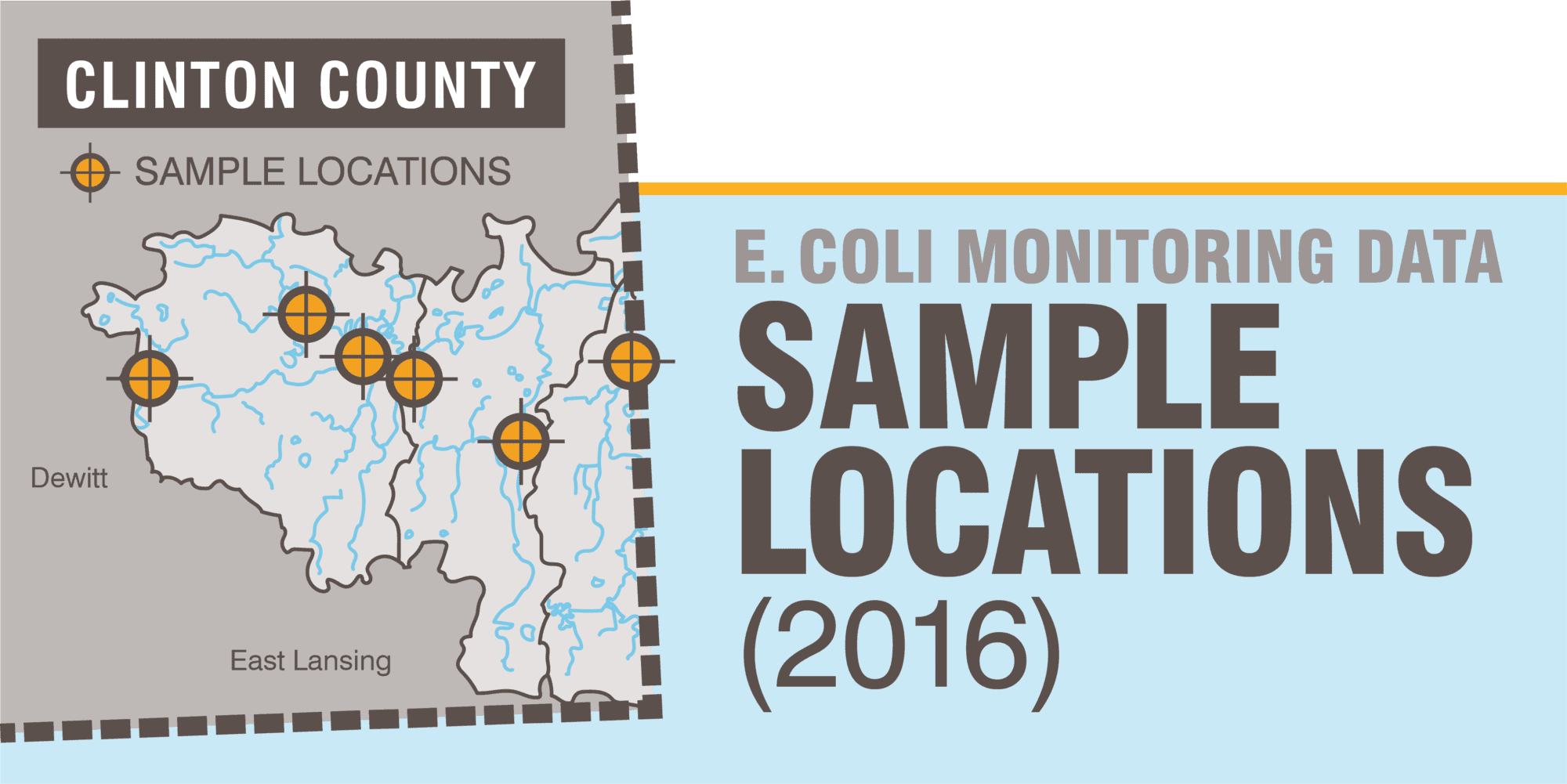Canine scent work isn’t just reserved for bomb detection and police investigations. Dogs with savvy sniffers are increasingly being used to detect the presence of human waste in our lakes, rivers and streams, which can enter through old, improperly maintained septic systems.
Recently, PSC senior consultant Jon Beard worked with the Clinton Conservation District (CCD) to compile a report on this public health threat in Mid-Michigan. He sat down with Bright Ideas to answer five quick questions about the hardest-working dogs on the beach, and explain why learning about septic systems shouldn’t just be reserved for plumbing pros.
How does canine scent tracking, which is cheaper and quicker than traditional means of lab testing, compare with other methods of water quality testing?
Traditional monitoring looks at what levels of E. coli, an indicator of pathogens or bacteria in waterways, are in the water, whereas canine scent tracking gives a yes or no answer to the presence of human sewage in water. Since dogs can’t tell you how much, though, pairing the sampling methods can be very beneficial.
Canine scent tracking is also starting to emerge in urban communities that are separating their stormwater and wastewater systems. The dogs can determine which areas remain combined or if you have leaks in your sewer system — things you otherwise may not see without breaking up the earth and digging up pipes. The dogs can just take a whiff and let you know what’s going on without resorting to more invasive measures at a much higher cost.
Has the use of dogs made water quality issues more accessible or interesting to people?
Everyone loves dogs. They provide a great opportunity to tell the story of the havoc human sewage can wreak in a lot of our waterways. Something as interesting and unique as canine scent tracking certainly gets people’s attention.
I was lucky enough to join Environmental Canine Services one day. The staff retrieved samples collected from the watershed, brought them back to the office and the dogs routinely got them right — with a very high degree of certainty. It’s pretty incredible watching these dogs work.
One of the things that the CCD report highlighted was residents’ lack of knowledge about their own septic systems. If more people understood the connection between their home’s septic system and the safety of the water when they’re out boating or swimming, how do you think our water quality would improve?
In this project, we helped the CCD survey people in areas that were highly likely to have septic systems. The responses showed that people genuinely care about water quality and its value to their community. People also understood that their actions can impact water quality.
This really helps the conservation districts, because you don’t need to spend as much time trying to convince people that their behaviors have consequences when it comes to water quality. When people care and understand that what they do on their land affects the water around us, it becomes more about educating them on specific septic management practices.
And we don’t want to paint everyone with a broad stroke, either. Lots of people maintain their septic systems well. And for others — again, it’s not that they don’t care. It’s just out of sight, out of mind. I flush my toilet, things go down the drain and they go away.
30% and 68%
According to the CCD report (2018), approximately 30 percent of residents did not know they have a septic system, and 68 percent did not know the average lifespan of a septic system.
85%
85 percent of homeowners feel a personal responsibility to protect water quality, but most indicated they didn’t know what pollutants were present in the watershed (CCD 2018).
Legislators are currently trying to change the fact that Michigan is the only state in the nation without a uniform set of standards that govern the performance and maintenance of septic systems. If the legislation passes, how would that affect our water quality?
Ensuring public health for many things in Michigan, such as through septic system maintenance, takes place at the local level. This legislation, instead, calls for Michigan to join the rest of the nation in adopting a single, uniform set of statewide standards. Some local environmental health directors are pushing back, arguing that uniformity isn’t necessarily better. They point out that Michigan is drastically different, from the Upper Peninsula to the southern region, in terms of conditions and soil types — so much so that you don’t need a statewide code. That said, many other states also have dramatically different land use characteristics and geology and they have found uniform codes beneficial.
This proposed legislation really gets into the issues of local autonomy and an unfunded mandate. As currently written, this bill requires local health departments to do something without providing any funding.
Local authorities contend, and I would generally agree, that their codes are sufficient when it comes to regulating the installation and siting of septic systems. This new bill would address what happens after that, after they’re installed.
Whether the statewide bill passes, the threats to public health in Mid-Michigan are significant enough that the local health department and conservation districts are working to find solutions. In the work we did for the CCD, a committee of local community leaders recommended an approach very similar to what is proposed in the statewide bill, which could be adopted locally.
How do we balance the duty to ensure public health with the financial burden on homeowners who may have to replace septic systems?
On one hand, you have a real public health problem, and on the other hand, you have individual property owners who may be of limited means, who are going to have to replace a rather expensive system, which might run $8,000 to $15,000, or more. There are some programs in place that help — Michigan State Housing Development Authority currently has a program that offers loans up to 20 years for septic system replacement costs, with a sliding scale where interest rates are based on household income. We definitely need to increase awareness of this and other programs.
Ultimately, my right to flail my arms ends at your nose. These discrete, dispersed systems are cumulatively creating a real threat. The conservation districts we worked with sometimes showed levels where it’s not safe to even have partial body contact with the water. It’s a question of, do you want your kids and your grandkids swimming and playing in waters of highly polluted lakes and creeks? That’s not a Pure Michigan system.



